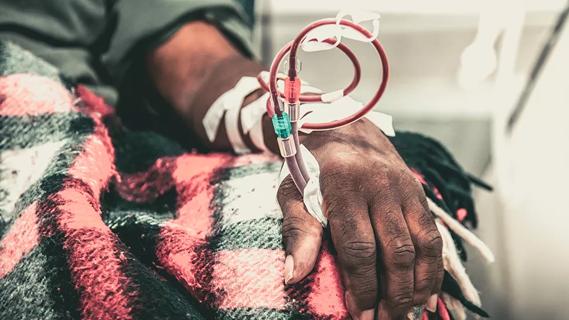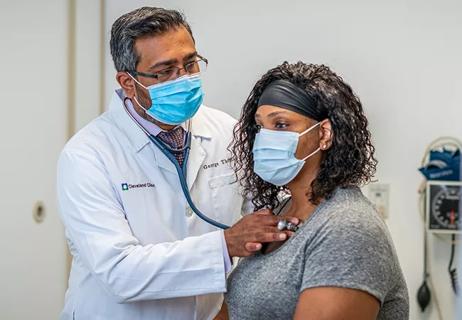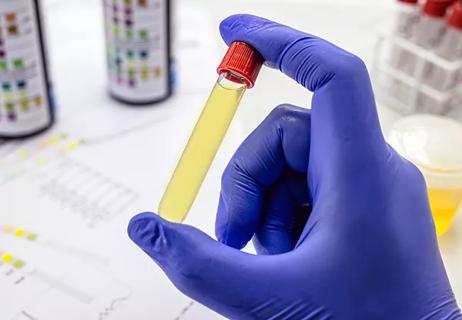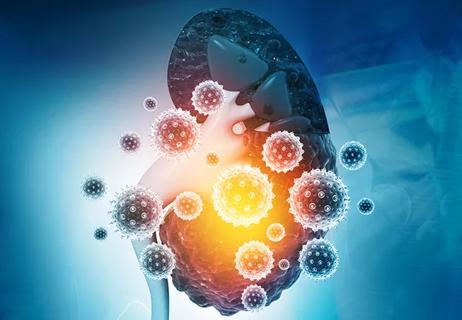Advertisement
Initiative seeks to reduce infection rates

Dialysis is lifesaving, but if not performed safely, can be life-threatening. Patients with end-stage kidney disease (ESKD) are complex and vulnerable to adverse events during their treatments, especially infections. Over the past two decades, infection-related mortality has decreased only slightly and deaths from infections in the first 90 days of dialysis are largely unchanged since 1993. Hospitalizations for infection exceed those for cardiovascular events in the dialysis population.
Advertisement
Cleveland Clinic is a non-profit academic medical center. Advertising on our site helps support our mission. We do not endorse non-Cleveland Clinic products or services. Policy
Implementing a culture of safety at dialysis centers has been challenging. In 2016, the Centers for Disease Control (CDC) and American Society of Nephrology (ASN) partnered to create Nephrologists Transforming Dialysis Safety (NTDS) with the goals of improving dialysis safety and eliminating infections. Cleveland Clinic nephrologist and NTDS member Leslie P. Wong, MD, discusses the issues concerning safety at dialysis centers and ways it can be improved in an article in Seminars in Dialysis.
Throughout health care, obtaining accurate data and statistical granularity about safety is difficult and derived mainly from inpatient settings. The body of literature describing accidental deaths and errors in dialysis is limited, even though the existing data shows that safety events are common: 87% of dialysis staff in one study reported mistakes or errors occurring during treatments in the past three months. “Because dialysis is often routine, we forget that so many things can go wrong,” says Dr. Wong.
One problem measuring safety is that most errors are inconsequential and they can be random and unpredictable. Also, “the temporal relationship between errors and outcomes is not always visible. For example, if a lapse in hand hygiene during a dialysis treatment results in bacterial contamination, it may take hours for a patient to develop signs or symptoms of an infection,” says Dr. Wong.
But the absence of data shouldn’t dissuade people from focusing on safety as a priority. “Most infections are preventable if policies and procedures are followed appropriately. We need to address culture and behavior so people are accountable for their actions, avoid shortcuts, and don’t wait until an infection happens to act,” says Dr. Wong.
Dr. Wong suggests the following factors as key to creating a culture of safety at dialysis centers:
Teamwork: As it is in all areas of healthcare, teamwork is critical at dialysis centers – high functioning, interconnected healthcare professionals working together to deliver safe, reliable care to patients. In a dialysis facility, multiple treatment shifts, unexpected clinical events, variability in staff expertise and differences in status contribute to uncertainty and instability in the work environment. “We need to approach safety from a systems view. Everyone – including patients – has a role to play in ensuring a safe environment,” says Dr. Wong.
Leadership: It is critical for medical directors to set the tone, direction and expectations for safety, communicate the importance of teamwork, and create structures that facilitate it. “They need to stress accountability and responsibility, encourage and support the right behaviors, and foster an open culture where people feel free to speak up.”
“Doctors have a lot of natural leadership skills but they need better training,” says Dr. Wong.
Advertisement
Data and Alignment: Dialysis should be a data-driven process with active surveillance and ongoing analysis of mistakes and near misses. Centers also need a quality process that everyone supports. This only occurs if nephrologists and dialysis facility management both agree on the importance of infection prevention and are able to work effectively together.
“Alignment begins with dialogue and openness about safety as a shared responsibility, and collaborative efforts between nephrologists and dialysis organizations to reinforce this idea,” says Dr. Wong.
COVID-19 has brought infection control and prevention to the forefront of healthcare, including at dialysis centers. “The protocols used to prevent coronavirus transmission are also beneficial in preventing bacterial infections. No one wants to let their guard down. It’s a lesson in how when people work together, they can improve outcomes. Infection prevention will continue to be a priority, which will help us work towards a culture of safety in dialysis,” says Dr. Wong.
Advertisement
Advertisement

Clinicians should individualize dosing practices based on patient risk factors and preferences

Fully-automated process uses preop CT, baseline GFR to estimate post-nephrectomy renal function

Could mean earlier treatment, but also could have negative effects

Identifying barriers in the renal genetic assessment of Black patients

Getting patients to their goal blood pressure

Study highlights benefits of nephrologist-led urine sediment analysis

Using sequencing data to identify novel factors linked to kidney disease with unknown origin

Program plays key role in diagnosis and management of genetic kidney diseases